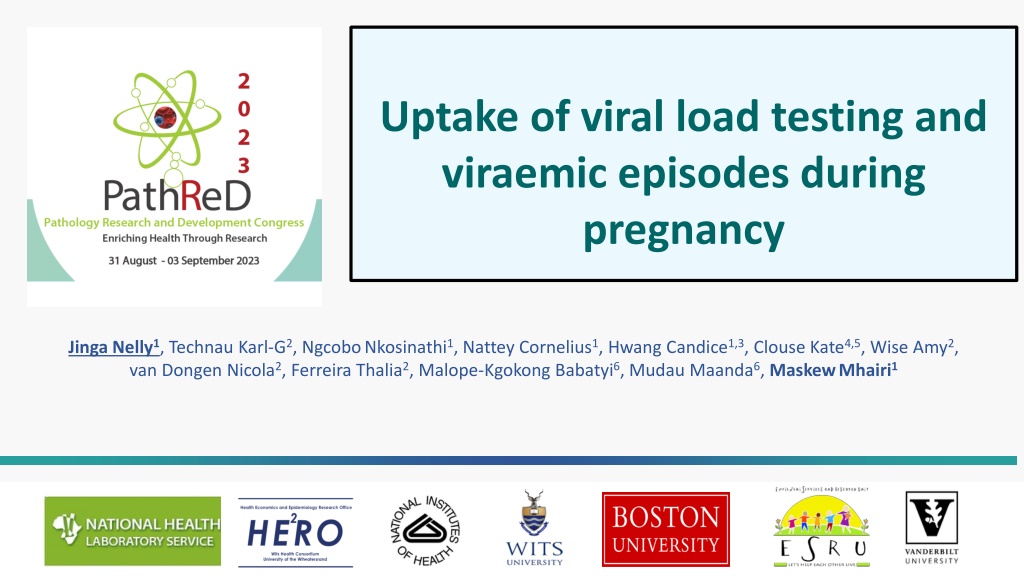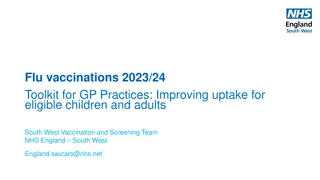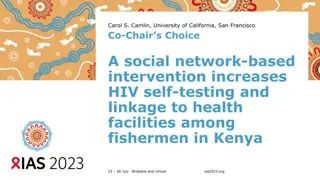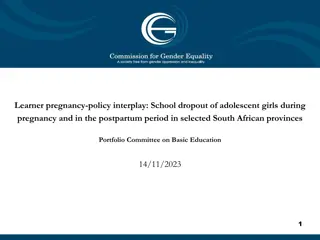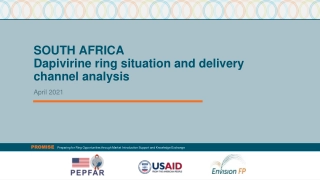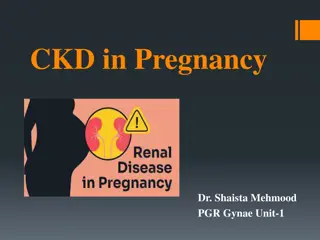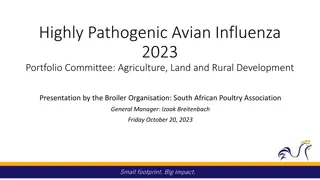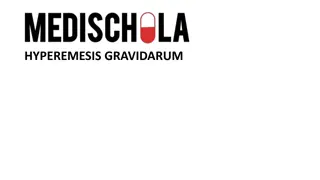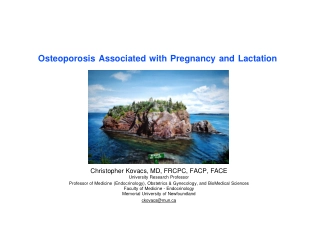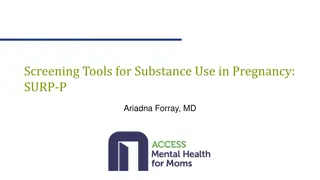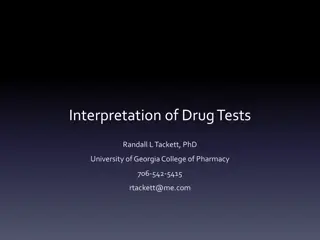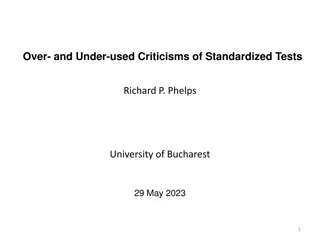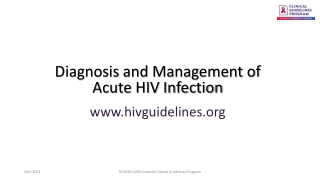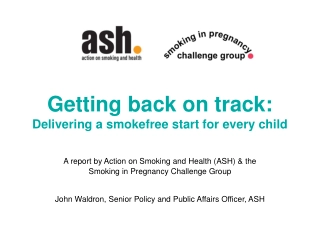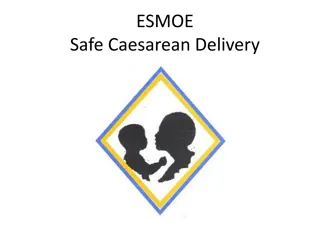Uptake of Viral Load Testing and Viraemic Episodes During Pregnancy in Johannesburg, South Africa
This study investigates the uptake of viral load testing and frequency of viraemic episodes during pregnancy among HIV-positive mothers in Johannesburg, South Africa. Data from a cohort of mothers and infants born at a local hospital were linked to laboratory data for analysis. The results show the characteristics of the study population, testing frequency, and distribution of viral load results. The findings provide insights into the monitoring of viral load in pregnant women living with HIV for prevention of mother-to-child transmission.
Uptake of Viral Load Testing and Viraemic Episodes During Pregnancy in Johannesburg, South Africa
PowerPoint presentation about 'Uptake of Viral Load Testing and Viraemic Episodes During Pregnancy in Johannesburg, South Africa'. This presentation describes the topic on This study investigates the uptake of viral load testing and frequency of viraemic episodes during pregnancy among HIV-positive mothers in Johannesburg, South Africa. Data from a cohort of mothers and infants born at a local hospital were linked to laboratory data for analysis. The results show the characteristics of the study population, testing frequency, and distribution of viral load results. The findings provide insights into the monitoring of viral load in pregnant women living with HIV for prevention of mother-to-child transmission.. Download this presentation absolutely free.
Presentation Transcript
Uptake of viral load testing and viraemic episodes during pregnancy Jinga Nelly1, Technau Karl-G2, NgcoboNkosinathi1, Nattey Cornelius1, Hwang Candice1,3, Clouse Kate4,5, Wise Amy2, van Dongen Nicola2, Ferreira Thalia2, Malope-Kgokong Babatyi6, Mudau Maanda6, MaskewMhairi1
Background Frequent monitoring of viral load (VL) is critical in (PMTCT). VL testing at confirmation of pregnancy and at delivery. Option B+ (2015) - for women newly initiated on ART, VL testing is indicated at 3 months on ART, delivery, 6 months postpartum and 3- monthly during breastfeeding. Health Economics and Epidemiology Research Office (HE RO)
Objective We described the uptake of VL testing and frequency and distribution of viraemic episodes during pregnancy. Health Economics and Epidemiology Research Office (HE RO)
Methods We linked prospective cohort data from mothers living with HIV whose infants were born at Rahima Moosa Mother and Child Hospital (RMMCH) in Johannesburg, South Africa, during the period 2013-2018 to laboratory data from the NHLS National HIV cohort. We described frequency of VL testing between first antenatal care visit and delivery. Health Economics and Epidemiology Research Office (HE RO)
Methods Among observed viral load tests, Summarised proportions with VL test results into 3 categories: <400 copies/ml, between 400 and 1000 copies/mL and >1000 copies/mL. Stratified the uptake and timing of VL testing in pregnancy prior to Option B+ era (2013-2015) vs. within the Option B+ era (2015 onwards) and Reported proportions with viraemic episodes pre- and post-Option B+ implementation. Health Economics and Epidemiology Research Office (HE RO)
Results Background Characteristic Median (IQR) 10,000 women Age at delivery 30(26-34) Parity 2 (2-3) 4,671 (46%) - records linked to NHLS HIV cohort Gravidity 3 (2-3) Missing DOD = 40 (<1%) VL tests outside the pregnancy period = 565 (12%) Gestation at birth (weeks) 39 (38-40) Gestation at entry into antenatal care (weeks) 20 (15-26) Antenatal CD4 (cells/ L) 394 (248-554) 4,064 analysed Health Economics and Epidemiology Research Office (HE RO)
Results Uptake of VL by Guideline Era VL tests were observed during pregnancy for 1,880 (46%) mothers, increasing from 20%-50% coverage during the Option B+ era. Improvement in VL monitoring was observed in the first and second trimester during the Option B+ era, and we found a reduction in VL monitoring in the third trimester from 83% to 74% Three-quarters of tests observed during pregnancy indicated viral suppression, 7% with viraemic episodes between 400-1000 copies/mL and 20% unsuppressed VL>1000 copies/mL Health Economics and Epidemiology Research Office (HE RO)
Results Frequency & timing of VL testing during pregnancy The majority (76%) of VL testing occurred during the third trimester with a peak at 34 weeks gestation Only 4% VL tests (n=79) occurred during first trimester, 11% within 7 days of delivery. Health Economics and Epidemiology Research Office (HE RO)
Results Frequency & timing of VL testing during pregnancy Median time to first observed VL during pregnancy decreased from 122 days prior to Option B+ to five days after the implementation of Option B+. Median time to first suppressed VL was reduced from 128 days to 53 days after the implementation of Option B+ . Health Economics and Epidemiology Research Office (HE RO)
Conclusion Implementation of the Option B+ policy has improved uptake of viral load testing among pregnant women However, coverage remains incomplete and the testing patterns do not reflect what guidelines require Late presentation for antenatal care results in the bulk of viral load testing occurring in the third trimester with low uptake at delivery and inadequate viral suppression rates. Additional years of data may determine if these trends hold. Health Economics and Epidemiology Research Office (HE RO)
Acknowledgements Collaborators: Empilweni Service and Research Unit (ESRU), Rahima Moosa Mother and Child Hospital, Johannesburg Funding: Eunice Kennedy Shriver National Institute of Child Health & Human Development and the National Institute for Allergy and Infectious Diseases grant R01 HD103466. Mentors: Dr. Mhairi Maskew, Principal Researcher, Health Economics and Epidemiology Research Office, University of the Witwatersrand Prof Karl Technau, Empilweni Service and Research Unit (ESRU), Rahima Moosa Mother and Child Hospital, Johannesburg
THANK YOU FOR YOUR ATTENTION www.heroza.org www.heroza.org information@heroza.org +27 10 001 7930
